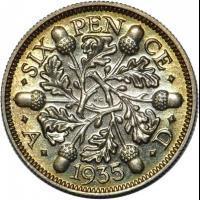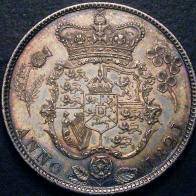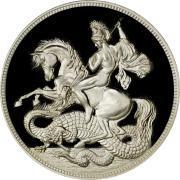@Paulus I am very sorry that I did not see this topic until just now. I have no idea how I missed it, but I only poke my head in every once in a while in the summer months, and I see it was posted in July. Nonetheless, I will post a bit below on my methods.
Firstly, let me just say that your pictures have improved a great deal Paulus. You're capturing luster very well in your more recent images, and the focus is also much sharper. I feel a lot of people pay too much attention to the bells and whistles on fancy cameras or purchase really expensive lenses hoping that having the right (i.e., expensive) equipment will somehow make you a better photographer. For coin photography, the most important pieces are often the very inexpensive ones of the equation.
Lighting is immensely important - I'd say the most important ingredient for taking good coin images. The type of light bulb (LED, incandescent, fluorescent) you use is less important, but understanding how to use that light source is key. For example, being able to set a custom white balance in your camera for your particular lights is key to getting realistic colors. The size of the light source (small bulb vs. large bulb) or the apparent size of the light source (e.g., a small light source diffused acts like a larger light source) is also important for fully lighting the coin's surface. The angle of the lights changes the appearance of the coin's surfaces a lot -- and your lights should always be placed above your mounted camera lens, if not even higher. With regard to lighting (in particularly angle), I wrote up a little article on the NGC forums some 3+ years ago, and I think it may be helpful. Keep your lights at a high angle to the surface on which the coin is placed, and diffuse them enough or use large enough light point surfaces to avoid hot spots on the coin. See my little schematic below of what my photography rig looks like.
Second to lighting, I would say that mounting your camera on a solid copy stand or tripod is very important. Images taken with a hand held camera will be a bit "shaky" or lacking in detail. I have seen hand-held images of coins that get the message across, but the ability to zoom in and see details or inspect surfaces is very limited. Not only is mounting your camera on a sturdy surface important, but it is also important that your camera is aligned to the flat surface of the coin properly. By that I mean, the camera's detector (a small rectangular flat surface at the back of the lens where the image is focused) needs to be perfectly parallel with the coin's surface (i.e., in parallel planes). This is important for focusing reasons. The easiest way to make sure your camera is mounted parallel with the surface on which the coin is placed is to use a little mirror. Place the mirror where you would place the coin, and adjust your camera in the x, y, and z planes as needed until the center of your lens' reflection is perfectly centered in the camera's viewfinder. See the little schematic I created below.
Lastly, practice, practice, and practice some more. I have now taken somewhere around 20,000 images of coins over the past 7 years. I have only been happy with my images for the past 4.5 years. It takes a while to get up to "happy" quality -- and I'm still improving my images and tweaking things today. I try to take at least some coin photos 2-3 days of every week. It just keeps me in the "zone".
I hope some of these hints help a little.
Best, Brandon
 Coinpublications.com
Coinpublications.com
.jpg.59f7f7c5ad8ff67a70f8db9e7dffd413.thumb.jpg.0826c31400cad2e4de5fe0a6afd6fd8b.jpg)


